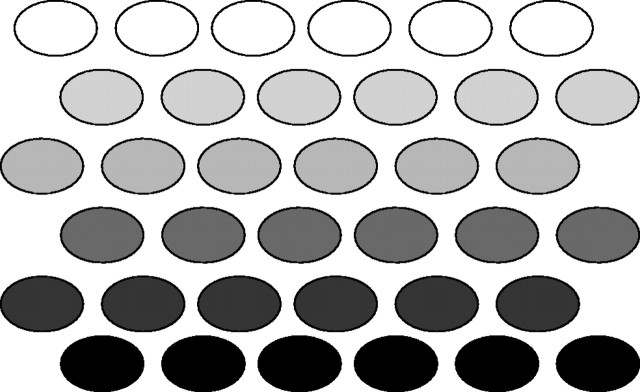Fig. 1.

Photosynthetic subsystems in a photosynthetic system. For the photosynthetic system of a plant individual, subsystems can be regarded as the individual leaves. For the system of a leaf, subsystems are chloroplasts. Given that the photosynthetic properties of the subsystems are identical and light comes from above, the situation can be imagined in which upper subsystems are light-saturated while lower subsystems are light-limited. Under such conditions, light absorbed by the upper subsystems is wasted (or even harmful), and light is limited in the lower subsystems. In terms of nitrogen economy, this situation is paraphrased as follows. Nitrogen in the photosynthetic enzymes in the upper subsystems is used at maximum velocity, while nitrogen is wasted in the lower subsystems. To maximize the light and nitrogen use efficiencies, the system should be constructed such that all the subsystems reach light saturation at the same time. There are two ways to realize such conditions. One is to homogenize the light environment. The other is to adjust photosynthetic properties of the subsystems to their respective light absorption.
